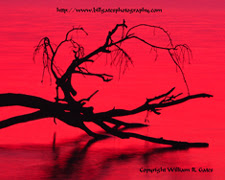
Let's begin to talk about specifics of how to provide water, food, and cover for one group of wildlife you may wish to attract to your yard. Butterflies are one of my favorites because I like to photograph as well as watch them. Let's begin with butterflies.
Caterpillars, or larval butterflies (also moths), get their water from the plants that they eat. The adults get water in several ways. One is via the nectar they obtain from flowers. Another way is through "puddling." Ever notice a large group of butterflies huddled together on the ground when it is hot? If you've noticed, the spot is usually wet. Butterflies will use their proboscis, their hollow needle-like mouthpart, to literally suck water from the soil. Nutrients are dissolved by the water as it sits on and is absobed into the soil. The butterflies also obtain these nutrients when they suck the water from the soil. Butterflies will also stand in a dry location and drink from very shallow water. Some butterflies, like the hackberry, love to rest on people and search the surface of the skin for delicious sweat. Sweat not only has a lot of water in it but also contains salt and nutrients. I have pictures of hackberry and red-spotted purple butterflies feeding on rotting pears. They obtain water and a variety of nutrients this way, including sugars (which, by the way, are also found in nectar). Butterflies will also obtain water by sucking sap from wounds in trees and shrubs. The Yellow-bellied Sapsucker, a bird that puts numerous small holes in trees and eats sap, also helps butterflies obtain a meal by providing ready access to these plant juices.
Obviously, many of the places where the adult butterflies obtain a drink are also food sources because minerals, sugars, and other foodstuffs are dissoved in the water. Everyone knows that adult butterflies feed on nectar obtained from flowers. But did you know that some butterflies will feed on scat (animal droppings) and the juices of decaying animal matter? I guess that's one reason to leave the dog droppings in the yard. However, I'm not sure the neighbors will buy it if the dog stuff ends up in their yard!
You should also feed the larvae, that is caterpillars, if you want more butterflies around. You likely know that caterpillars feed on plants, mainly leaves. Adult butterflies tend to lay their eggs on or near the plant that their caterpillars will eat. So, you can have eggs and young by providing the appropriate larval food plants. In addition, some plants provide food for both the caterpillar and adult. An example would be butterfly weed (Asclepius tuberosa). This milkweed provides nectar for the adults and also feeds the monarch caterpillar. The story is well known. The monarch caterpillar feeds on milkweeds and obtains some substances distasteful to birds. The distasteful substances are also found in the adult (I also assume in the pupa as well) and birds avoid them. Each species has at least one plant, and usually several more, on which the caterpillar will feed. Provide the right plant and the eggs and caterpillars will come. Assuming you are in the right area and surroundings for that species of butterly.
What about cover? Where do butterflies hide and rest? Well, normally under the leaves of plants or sometimes under the flaky bark. Some species rest high in the trees. Others will spend the night near the ground hiding in the grass or low lying herbs. The caterpillars usually hide in the same places and others where they can find protection from predators. Pupal cases or the bare pupae can be found on plants, under bark, in the leaf litter, underground, any similar places where they will have to spend some time out of the site of those that like to eat them.
So, you now know how to attract a variety of butterflies. Provide various types of flowers that produce nectar. Allow fruit that falls from your apple or pear trees to rot or take some out of the refrigerator and put them outside. Moisten soil on hot days and provide a bird bath from which the butterflies can obtain water. Grow some plants on which caterpillars will feed. It sounds bad, but leave those dog droppings in the yard -- maybe in an out-of-the-way corner. Of course, let the hackberry butterflies stop by and have a sweat meal once in a while. "Hey honey, I'm going to go lie out in the sun and feed the hackberry butterflies!" "Yes, dear. But don't feed them too long." If you have a variety of plants in your yard the butterflies will also find cover. They will also use it for reproductive cover.
In the next article I'll discuss some other things you can do to keep the butterfly population in your yard healthy.


